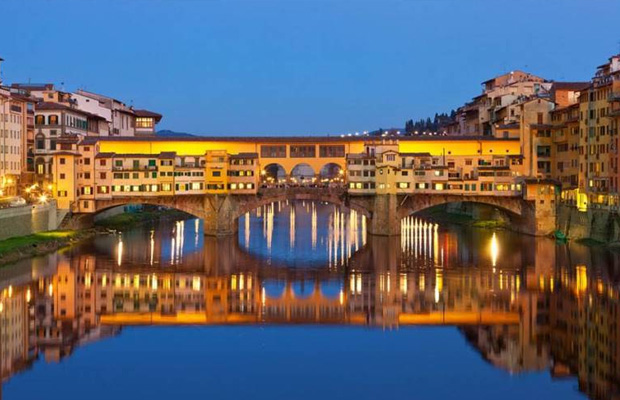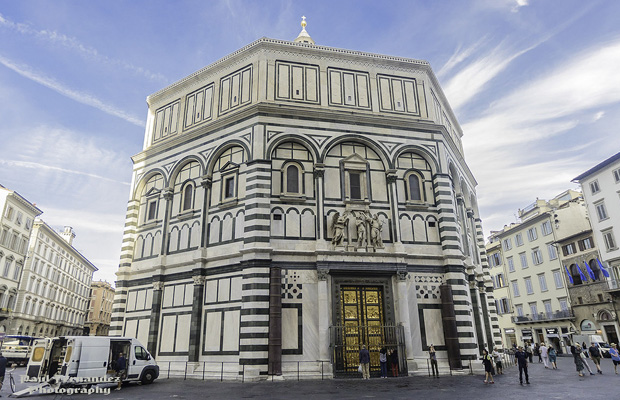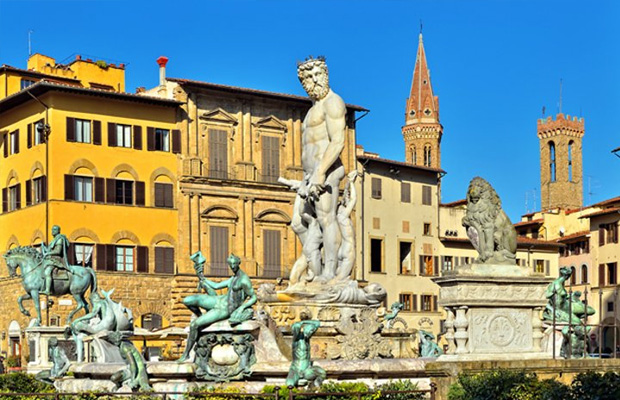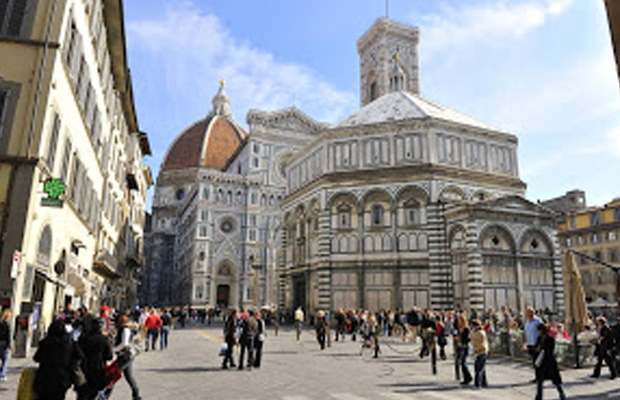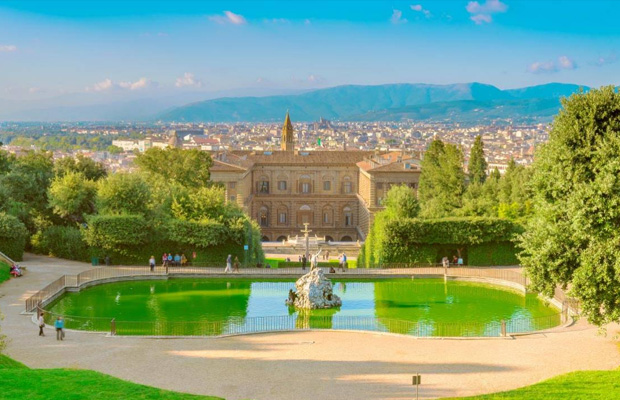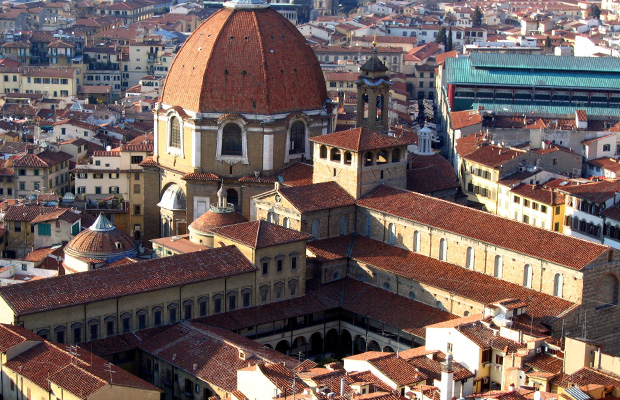Ponte Vecchio
Ponte Vecchio
Italy
Florence
Florence Travel Guide
Book Tour & Activities
Your tour in Florence.
Book your stay
Your hotel in Florence.
Overview
The Ponte Vecchio is a medieval stone closed-spandrel segmental arch bridge over the Arno River, in Florence, Italy. It is noted for the shops built along it, as was once common. Butchers, tanners, and farmers initially occupied the shops; the present tenants are jewelers, art dealers, and souvenir sellers. The Ponte Vecchio's two neighboring bridges are the Ponte Santa Trinita and the Ponte alle Grazie.
The Ponte Vecchio is a medieval stone closed-spandrel segmental arch bridge over the Arno River, in Florence, Italy. It is noted for the shops built along it, as was once common. Butchers, tanners, and farmers initially occupied the shops; the present tenants are jewelers, art dealers, and souvenir sellers. The Ponte Vecchio's two neighboring bridges are the Ponte Santa Trinita and the Ponte alle Grazie.
History and construction
The bridge spans the Arno at its narrowest point[4] where it is believed that a bridge was first built in Roman times,[5] when the via Cassia crossed the river at this point.[4] The Roman piers were of stone, the superstructure of wood.[citation needed] The bridge first appears in a document of 996 and was destroyed by a flood in 1117 and reconstructed in stone. In 1218 the Ponte alla Carraia, a wooden structure, was established nearby which led to it being referred to as "Ponte Nuovo" relative to the older (Vecchio) structure. It was swept away again in 1333 except for two of its central piers, as noted by Giovanni Villani in his Nuova Cronica. It was rebuilt in 1345.
Giorgio Vasari recorded the traditional view of his day that attributed its design to Taddeo Gaddi — besides Giotto one of the few artistic names of the trecento still recalled two hundred years later. Modern historians present Neri di Fioravanti as a possible candidate as builder.
Sheltered in a little loggia at the central opening of the bridge is a weathered dedication stone, which once read Nel trentatrè dopo il mille-trecento, il ponte cadde, per diluvio dell' acque: poi dieci anni, come al Comun piacque, rifatto fu con questo adornamento. The Torre dei Mannelli was built at the southeast corner of the bridge to defend it.
The bridge consists of three segmental arches: the main arch has a span of 30 meters (98 feet) the two side arches each span 27 meters (89 feet). The rise of the arches is between 3.5 and 4.4 meters (11½ to 14½ feet), and the span-to-rise ratio 5:1.[9] The shallow segmental arches, which require fewer piers than the semicircular arch traditionally used by Romans, enabled ease of access and navigation for animal-drawn carts.[3] Another notable design element is the large piazza at the center of the bridge that Leon Battista Alberti described as a prominent ornament in the city.
A stone with an inscription from Dante (Paradiso xvi. 140-7) records the spot at the entrance to the bridge where Buondelmonte de' Buondelmonti was murdered by the Amidei clan in 1215, which began the urban fighting of the Guelfs and Ghibellines.
The bridge has always hosted shops and merchants who displayed their goods on tables before their premises, after authorization by the Bargello (a sort of a lord mayor, a magistrate and a police authority).
A 4-min walk from the Loggia dei Lanzi
Address: Ponte Vecchio, 50125 Firenze FI, Italy
Location: Florence
Body of water: Arno
Architects: Taddeo Gaddi, Neri di Fioravante
Bridge type: Arch bridge, Deck arch bridge
Video Travel Inspiration
See Ponte Vecchio on Map
Most Popular Cities

Siem Reap
Cambodia
Ho Chi Minh City
Vietnam
Beijing
China
Paris
France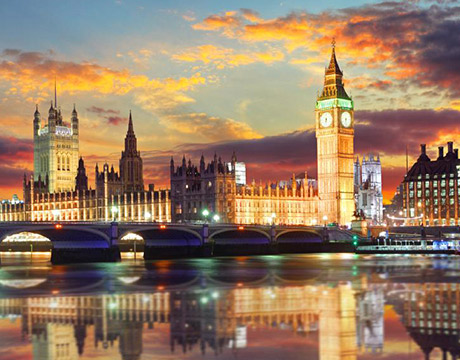
London
United Kingdom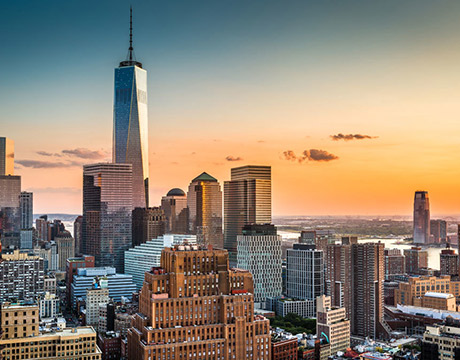
New York
USA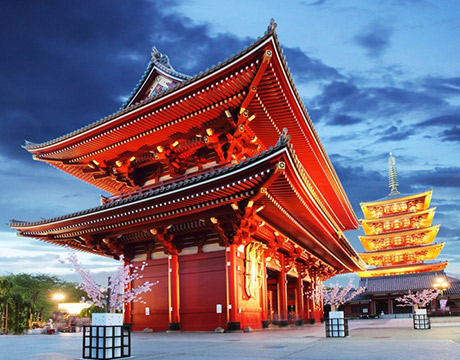
Tokyo
Japan
Bangkok
Thailand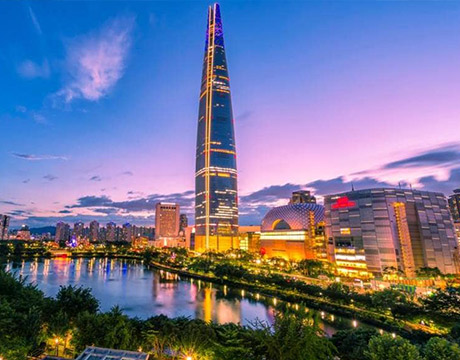
Seoul
South Korea
Vientiane
Laos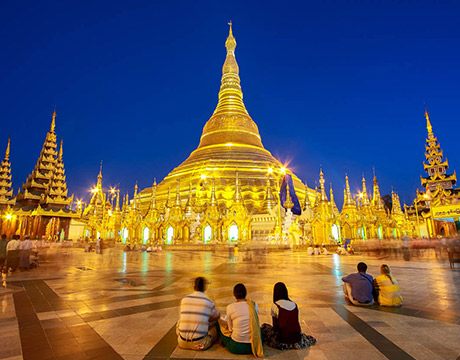
Yangon
Myanmar
Washington DC
USA
Los Angeles
USA
Ottawa
Canada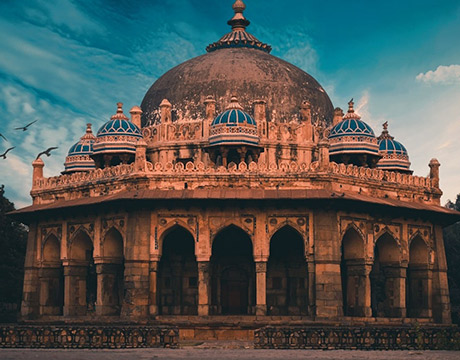
New Delhi
India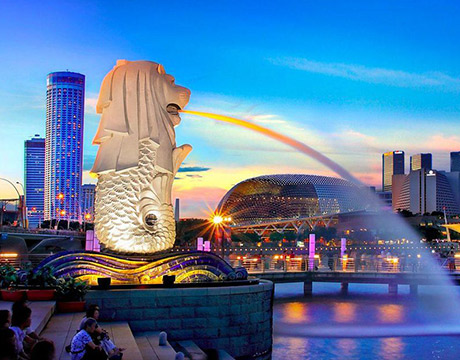
Singapore
Singapore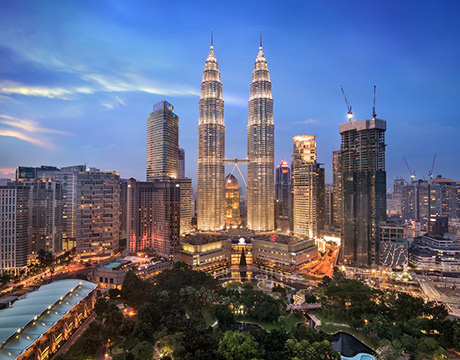
Kuala Lumpur
Malaysia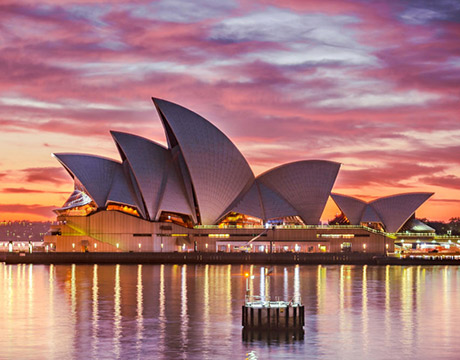
 English
English French
French Khmer
Khmer Thai
Thai Vietnamese
Vietnamese Chinese
Chinese Korean
Korean German
German Japanese
Japanese Italian
Italian Russian
Russian Spanish
Spanish Dutch
Dutch Indonesian
Indonesian Malay
Malay
